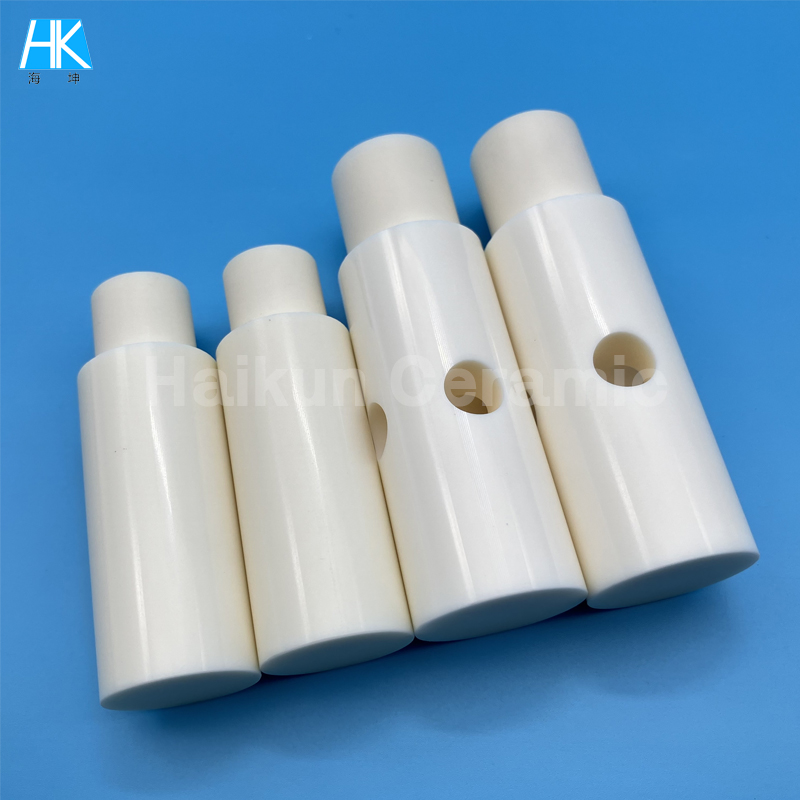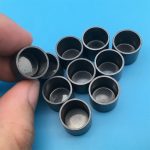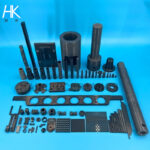Why are more and more companies choosing ceramic plungers instead of metal ones?
In industries such as hydraulics, electric spraying, metering pumps, high-pressure cleaning, and fluid transfer, plungers are core components, and their lifespan and stability directly affect the overall performance of the machine. In the past, metal plungers were widely used due to their mature manufacturing process and low cost. However, in recent years, more and more companies have begun to proactively upgrade their plungers to precision ceramic plungers. Why is this trend occurring? What industry pain points do ceramic plungers actually solve?
E-mail:sales01@hkceramic.com

| Plate material mm (L, H, and W can be selected as needed, customization supported) | ||||||||||||
| L | 3 | 5 | 8 | 10 | 12 | 15 | 18 | 20 | 22 | 25 | 28 | More (Customizable) |
| W*H | 100*100 | 90*140 | 95*145 | 150*150 | 160*160 | 122*290 | 110*275 | More (Customizable) | ||||
| Rod material mm (W, Ø can be selected as needed, customization supported) | ||||||||||||
| Ø | 0.5 | 0.8 | 0.9 | 1 | 1.5 | 2 | 2.5 | 3 | 3.5 | 4 | 4.5 | More (Customizable) |
| W | 60 | 100 | 120 | 200 | More (Customizable) | |||||||
When operating in high-pressure, high-speed, and corrosive fluid environments, metal plungers are prone to the following problems:
Rapid wear and surface scratches
Poor lubrication leads to frequent seizures
Corrosion pits and rust cause unstable seals
Long-term use results in decreased precision and reduced efficiency
As equipment performance requirements continue to increase, the performance bottleneck of metal materials becomes more and more obvious, and maintenance costs are also getting higher and higher.
① Super wear-resistant: Lifespan increased by 3 to 10 times
Structural ceramics, such as zirconia and alumina, can achieve a hardness of:
Zirconia: 1200 HV
Alumina: 1600 HV
Reference: 《Comparison of Properties of Precision Ceramic Materials》
It far surpasses traditional metal materials.
During long-term high-speed reciprocating motion, ceramic plungers experience almost no wear, significantly reducing:
Replacement frequency
Downtime costs
Maintenance costs
The feedback from the industry is that lifespan has been increased by 3 to 10 times.
② It has strong self-lubricating properties and is not prone to seizing.
The ceramic surface can be precision polished (up to Ra0.02), has a low coefficient of friction, high compatibility with sealing components, and is not prone to dry grinding or seizing.
In application, it manifests as follows:
Lower starting resistance
Smoother equipment operation
Significantly reduced chance of high-pressure pump seizure
This advantage is of great value for equipment that operates continuously for long periods.

③ It has extremely strong corrosion resistance and is suitable for more complex working conditions.
Metals are prone to pitting or rusting when exposed to acids, alkalis, salt spray, or liquids with high water content.
Ceramic materials possess natural corrosion resistance:
Unaffected by acids and alkalis
Unaffected by salt water
Unaffected by cleaning agents and solvents
Will not rust
It is suitable for complex fluid environments in industries such as chemical, spraying, metering, food fluid, and pharmaceutical.
④ High strength, resistant to pressure and high temperature
Taking zirconia ceramic plungers as an example:
Bending strength can reach 800MPa
High fracture toughness (9MPa·m1/2)
Temperature resistance exceeds 800℃
It can still work stably under high pressure and high frequency impact, making it suitable as a replacement for metal in higher-level working conditions.
✔ More stable output pressure
✔ More durable sealing performance
✔ More accurate metering
✔ More suitable for long-term high-load operation
✔ Significantly reduced equipment maintenance costs
✔ Significantly improved overall machine reliability

Many businesses have reported:
“After replacing the ceramic plunger, the equipment requires almost no maintenance for a year, and the customer complaint rate has dropped significantly.”
As a manufacturer of precision ceramic structural components, Haikun Precision Ceramics provides plungers for equipment manufacturers with the following characteristics:
Custom orders based on provided drawings or samples; dimensional tolerances controllable.
Mirror polishing.
Materials available: Zirconia, alumina, silicon nitride, etc.
Non-standard customization supported based on provided drawings or samples.
20 years of ceramic processing experience; 5000+ customer cases.
We can also provide material selection and structural optimization solutions based on equipment load, sealing method, and operating pressure.
As equipment develops towards higher pressure, higher stability, and longer lifespan, ceramic plungers are no longer just “optional upgrades,” but rather key components for companies to enhance their product competitiveness.
Choosing a ceramic plunger today is an investment in the future reliability of your equipment.
For inquiries regarding ceramic plunger material selection, structural optimization, or sample processing, please feel free to contact Dongguan Haikun New Materials Co., Ltd.
*For more details, please feel free to contact our company.

Small Silicon Carbide Ceramic Crucible
Material:Silicon Carbide Ceramics
Describe:Custom small silicon carbide (SiC) ceramic crucibles offer stability and durability at high temperatures, ideal for reliable experiments and production.

High Temperature Resistant Alumina Ceramic Insulation Ring
Material:Alumina ceramics
Describe:High Temperature Resistant Alumina Ceramic Insulation Ring, also known as porous retaining rings, feature precise designs with drilled holes for secure connection. Their high hardness and strength ensure stability and durability under pressure, ideal for long-lasting equipment performance.

High Temperature Silicon Nitride Ceramics
Material:Silicon Nitride Ceramics
Describe:Our silicon nitride ceramic sealing rings are made of 99% high-purity Si₃N₄ material and are formed by hot pressing and sintering. They have super corrosion resistance (resistance to HF acid and molten aluminum) and high temperature resistance (continuous operation at 1200°C). They have a 50% longer service life than traditional silicon carbide sealing rings and are widely used in chemical...

Macor Ceramic Ferrule/Bush
Material:Macor Ceramic
Describe:Machinable ceramic Bush are a type of advanced ceramic material with excellent machining properties. They can be cut, drilled, milled, etc. on conventional machining equipment (such as CNC, lathes, and drilling machines) without the need for special diamond tools. They are widely used in precision electronics, semiconductors, medical and high-temperature insulation fields.

High Thermal Conductivity Alumina Ceramic Substrate
Material:Alumina ceramics
Describe:High Thermal Conductivity Alumina Ceramic Substrate, also known as porous retaining rings, feature precise designs with drilled holes for secure connection. Their high hardness and strength ensure stability and durability under pressure, ideal for long-lasting equipment performance.

Aluminum Nitride Precision Ceramic Accessories
Material:Aluminum Nitride Ceramics
Describe:Aluminum Nitride Precision Ceramic Accessories offer precise perforation for mechanical support, electrical insulation, and thermal management enhancement in precision applications.

